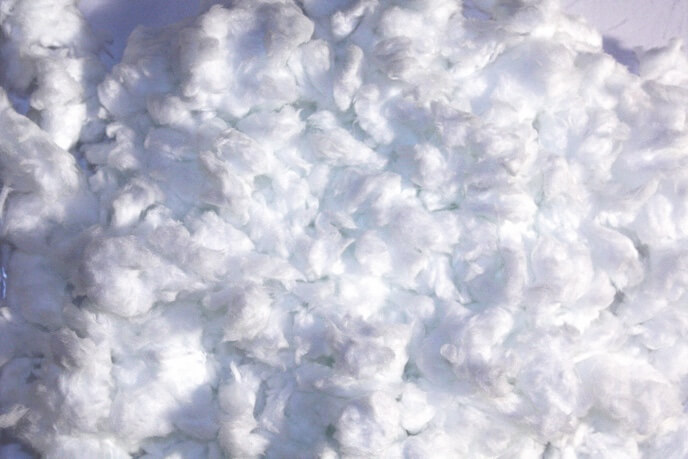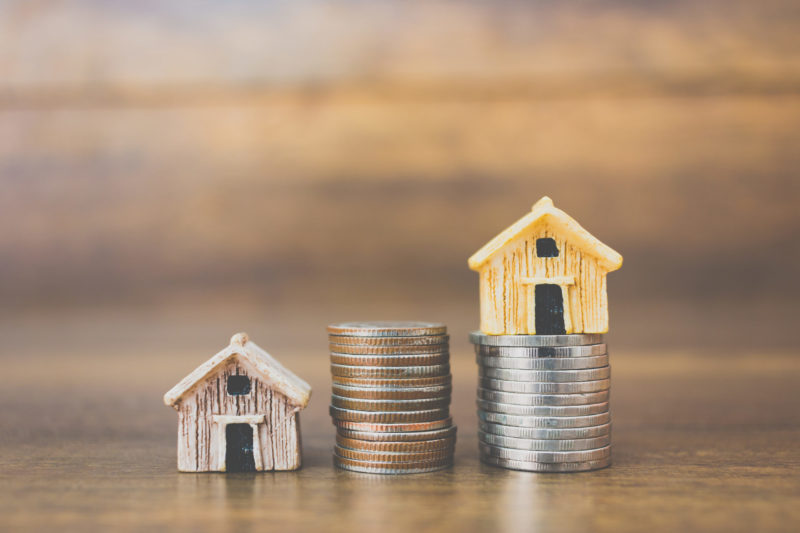
Cavity wall insulation
Energy-efficient living in a healthy and comfortable home
Proper cavity wall insulation increases your living comfort and saves significantly on your energy costs. For an average three-walled house, the savings can even amount to € 800 per year*. An advantageous return that you can also combine with interesting renovation bonuses!
Until the 1920s, most houses in Flanders consisted of two solid rows of bricks. Because of moisture problems and enormous heat loss, a new building technique was introduced: the cavity wall. This is an opening – usually between 4 and 10 centimeters wide – between the inner and outer row of bricks. Through air circulation in the cavity, rainwater or moisture was removed.
This technique did prove detrimental to indoor heat. The air circulation in the empty cavity again caused cold interior walls.
By insulating this cavity wall, the interior walls remain pleasantly warm. By using breathable materials, air circulation also remains intact. So a win-win situation, where ‘old’ techniques are coupled with new materials. A healthy, breathable and comfortable home is the result.
✔️ optimal home comfort: warm faster in winter, cool longer in summer
✔️ lower energy costs
✔️ quick intervention: cavity wall insulation is done in just one day
✔️ short payback period: quick return on investment thanks to significant energy savings✔️ value of your home increases, as a favorable EPC score becomes increasingly important
✔️ environmentally friendly living thanks to reduced energy consumption
Pluimers Insulation chooses high-quality mineral glass wool: URSA Pure Floc KD.
With a Lambda value of 0.034 W/mK, this mineral glass wool achieves an excellent insulation value.
In addition to thermal comfort, you also enjoy a limited acoustic insulation value. Useful if you live next to a busy road, for example.

Mineral wool: optimal service life
Cavity wall insulation with mineral glass wool is also very durable and environmentally friendly. The material was recycled and has a superior lifespan.
In fact, research by our manufacturer URSA shows that the mineral glass wool in the cavity wall still has the same characteristics after 50 years: the thermal and moisture-resistant properties remain almost unchanged.
As a qualified performer, Pluimers Insulation is bound by various quality parameters. For example, the mineral wool is blown in with a density of 34 kg/m². This density ensures that the wool is very compact in the cavity and cannot sag.
1 Preliminary inspection: our certified inspector performs an endoscopic examination of the cavity and assesses the possibility of cavity wall insulation
2 Quotation and inspection report: you receive a quotation and our inspector draws up an inspection report.
3 Site preparation: our experienced and continuously trained workmen insulate your house with the greatest care
4 Enjoy an insulated home: your cavity walls are insulated in one day – your investment pays off immediately
5 Apply for your premiums: if you are entitled to premiums, you will receive the necessary certificates after the work is completed.
The costs for cavity wall insulation depend on various things, such as the number of m2, cavity width, type of stone, etc. A no-obligation visit to your home is therefore necessary to make a good offer.
If you want a specific estimate for your insulation project, you can always call on an insulation consultant from Pluimers Insulation. He performs an endoscopic examination of the cavity without obligation and draws up a quotation on site.
An investment in cavity wall insulation obviously brings a nice return. For an average corner house, the average savings thanks to cavity wall insulation amount to €800 per year*.

Payback period for cavity wall insulation
This calculation obviously makes the payback time of cavity wall insulation very short. For an average three-walled house, the savings amount to € 800,- per year* and you will earn back the investment in 3 to 4 years.
Milieu Centraal calculated that an investment in cavity wall insulation can even be compared to a savings account with 10% interest. Moreover, the advantageous renovation premiums give you an extra boost.
*Source: Milieu Centraal. Savings based on €1,- per m³ gas and an average corner house.
If you’re not sure if you have a cavity, it’s best to call in an advisor from Pluimers Insulation. Make an appointment for a no-obligation site visit and inspection of the cavity.
This depends on the situation and the insulation already present in the cavity. If these are hard insulation boards that are also still in good condition, it is possible to insulate the cavity additionally – provided that there is enough space left.
If loose glass or rock wool mats were used, in most cases it is no longer possible to fill the remaining cavity. Adding additional insulation may cause the mats to move. This can cause thermal bridges to form in some places.
Old, poorly insulated homes are often “naturally” ventilated. Openings and gaps in the house provide an automatic circulation of fresh air. Healthy, but obviously not comfortable in winter.
Insulating the home eliminates some of this natural ventilation. Slumbering moisture problems can then begin to manifest themselves. The rule is: insulate better, ventilate better. The more one insulates, the more airtight the house. For a healthy indoor climate, it is therefore important to also ventilate regularly or even continuously.
Our advisor will visit you completely free of charge and without obligation.
Free insulation advice